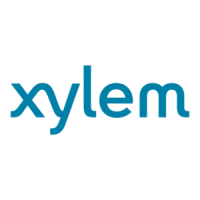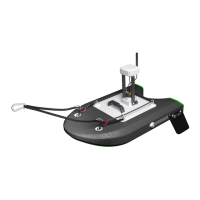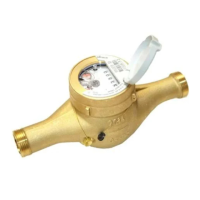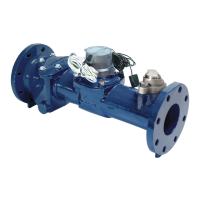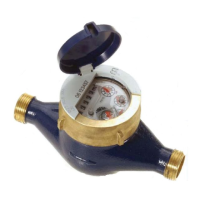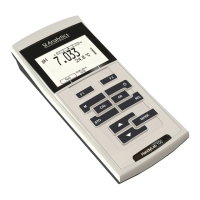SonTek, a Xylem brand
34 RiverSurveyor S5/M9 System Manual (February 2013)
GGA positions divided by the travel time between those two positions. Differential
corrections are required for the GGA data to reduce the amount of position error as-
sociated with each measurement. The RiverSurveyor uses two types of differential
corrections: “Sub-meter” differential and “Real-Time Kinematic” (RTK).
3. VTG GPS-referenced velocity: GPVTG (VTG) refers to a specific NMEA-0183 proto-
col for outputting GPS velocity data. In this case, the VTG string contains the actual
boat speed information along with several other GPS parameters. The GPS velocity
is calculated based on the Doppler shift of the received satellite signals.
There is a drop down menu to select the appropriate track reference. All available track ref-
erences will be available for analysis or to recalculate discharge in post-processing. There
are four options:
• Bottom-Track: The ADP uses the bottom-track feature to measure the velocity of a ves-
sel relative to the river bottom. The vessel velocity is then subtracted from the measured
water velocity to give the absolute water current profile independent of vessel motion.
This is the only track reference available for systems without an optional GPS.
• GPGGA: The ADP uses the GGA string (from the GPS data) to measure velocity of a
vessel based on GPS position data. This is only available for systems configured with a
GPS option. It is recommended that GGA data use a sub-meter differential or RTK cor-
rection for discharge calculations. The highest quality and most accurate method ap-
plies RTK-corrected data.
• GPVTG: The ADP uses the VTG string (from the GPS data) to measure the velocity of a
vessel based on GPS velocity data. This method requires additional review of data qual-
ity parameters to verity data quality.
• System: The ADP references all velocities only to itself. This should only be used in
specialized applications by experienced users. It is not recommended for discharge
measurements from a moving vessel.
Depth Reference - This is a drop down menu that has two options for determining water depth.
Both options are available for post-processing, however you can decide the default measure-
ment.
• Vertical Beam: This is highly accurate echo sounder data used to determine water
depth.
• Bottom-Track: This uses data from the four angled beams to determine the depth of the
water column using the average depth from each beam.
Coordinate System - This drop down menu has three options. All three options are available
for post processing; however you can set the default for the measurement.
• ENU: This is the traditional East, North, and Up coordinate system.
• System: This uses the ADP as a reference. Used for internal testing only.
• XYZ: This is a three-dimensional “relative position” coordinate system used only for spe-
cialized applications by experienced users.
6.8. Measurement Settings
Measurement Settings can be entered by clicking Change Measurement Settings. They apply to
the specific discharge measurement. The information from this menu (Figure 33) can be

